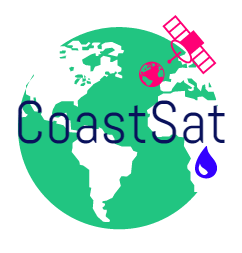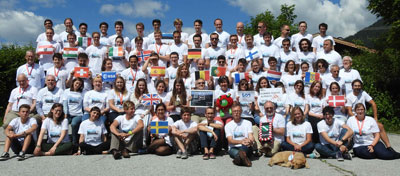|
|
Summer School Alpbach 2016 - Satellite Observations of the Global Water Cycle - 12.-21. July 2016
The Summer School Alpbach has a long tradition in education of space science and technology, but the specific topics differ from year to year. This time, after 5 years of topics like planetary research or fundamental physics, an earth observation topic was offered that focused on the global water cycle. I applied and was among 58 students from all over Europe that participated in the summer school. German students selected for participation received a scholarship by DLR for their stay in Alpbach.
The concept of the summer school is special, so some of the students had an engineering and others a scientific background. This is due to the character of the summer school that consists not only of lectures but also of workshops, in which four different student teams compete in developing a space mission concept that is evaluated on the last day by an expert jury. Each team consists of about 15 students and has two team tutors. Additionally there are roving tutors and lecturers that support each team with their expert knowledge.
After the registration and a get-together on Monday, the summer school officially started on Tuesday with opening lectures by FFG (Österreichische Forschungsförderungsgesellschaft) Managing Director Klaus Pseiner, ESA (European Space Agency) Director General Johann-Dietrich Wörner and Chair of the DLR (Deutsches Zentrum für Luft- und Raumfahrt) and Executive Board Pascale Ehrenfreund, who herself is a former Alpbach summer school student. During the opening lecture, the summer school was awarded with the Hubert Curien Award 2016 from Eurisy that honors proven merits in bridging space and society.
After different lectures covering the global water cycle and it’s observation from space, the head tutor Peter Falkner (ESA) introduced us to the workshop concept and announced our team assignment. I was assigned to Team Red, having Günter Kargl (Institut für Weltraumforschung, Graz) as engineering tutor and Matthias Drusch (ESA) as science tutor. The day concluded with a reception at the congress center Alpbach to celebrate the 40 year anniversary of the summer school. For the rest of the week the days consisted of lectures until lunch and workshop time to develop the space missions afterwards. One of the lecturers was Clemens Simmer, who gave a presentation on observation and modeling of precipitation processes on Wednesday. Other talks that were especially relevant for me were given by Michael Rast (ESA) on vegetation’s role in the water cycle and by Erik de Witte (ESA) on microwave instrumentation. Every evening all students, tutors and lecturers came together for a joint dinner at Hotel Böglerhof.
During workshop time, the main objectives were to organize the team and to find a good scientific objective to study. In Team Red we decided to work on the aspect of water quality in coastal regions, rivers and lakes and designed a mission concept called CoastSat. We divided our team into a science and an engineering sub-team, where the first task for the scientists was to provide the engineers with the scientific requirements they had to meet with their instrument and orbit designs. I learned a lot in the process of clearly formulating and justifying scientific objectives, observables and the resulting scientific requirements. Usually scientists just have to work with the satellite data that is available and are dissatisfied with the lack of spatial and temporal resolution. Now being in the position to decide which specifications are adequate and to see the trade-offs engineers have to make, gives a whole new perspective. Besides formulating the scientific requirements, designing the instrumentation and choosing the right orbit, our team had to keep in mind the competitiveness with other (existing) missions, the launcher to be used, the ground segment, the social impact and the public outreach as well as the cost and risk assessment. Of course we had to find a mission name and logo as well. Our team tutors and the roving tutors helped us a lot during that whole process with their experience and their huge commitment. We also had to meet several deadlines: the mission objectives and observations requirements review on Friday, the mission preliminary design review on Monday and the mission final design review on Tuesday. During each of these reviews we had to present the state of our mission and got feedback by different tutors and judges. The final deadline to hand in a report and the data for the mission presentation that took place on Thursday, was Wednesday 24:00. To meet that tight schedule, the weekend was also used for working on the mission, except for a mountain hike on Saturday where we explored the Wiedersbergerhorn in Alpbach and met friendly Tyrolian cows.
The final mission concept presented by Team Red on Thursday was CoastSat, a mission consisting of two identical satellites placed into a 511 km sun synchronous orbit at 97° inclination. Both space segments carry a multispectral imager and a thermal imager. With those, CoastSat will be able to observe turbidity, chlorophyll-α, colored dissolved organic matter and sea surface temperature with a spatial resolution of up to 20 m and a revisit time of 2-3 days. This mission would fulfil the following scientific objectives: improving the retrieval of water quality indicators from spectral radiance measurements, developing a better process-understanding of turbulent mixing in coastal regions, analyzing the nutrient transport from land to rivers, lakes and coastal waters and building prototype monitoring systems for coastal water, rivers and lakes.
 Missions proposed by the other teams were: PoPSAT (Polar Precipitation Satellite) by Team Blue to observe precipitation in high latitudes, WAVE-E (Water Vapor European-Explorer) by Team Green to measure Water Vapor in the UTLS zone and SWEAT (Snow Water Equivalent with Altimetry) by Team Orange to improve the estimation of the global snow water equivalent.
Missions proposed by the other teams were: PoPSAT (Polar Precipitation Satellite) by Team Blue to observe precipitation in high latitudes, WAVE-E (Water Vapor European-Explorer) by Team Green to measure Water Vapor in the UTLS zone and SWEAT (Snow Water Equivalent with Altimetry) by Team Orange to improve the estimation of the global snow water equivalent.
All mission concepts were presented to a jury chaired by Roger Bonnet. The mission PoPSAT was selected to be studied further during Post Alpbach, an event at ESAs Redu Center in November, where 15 selected participants from Alpbach will elaborate the mission for presentation at a scientific conference or a scientific publication.
Altogether Alpbach was an exhausting but impressive experience that I will never forget. I learned a lot on areas I never came across before, on working in a team but also on working scientifically in general. I can recommend this summer school to anybody who wants the chance to participate and works in a field related to coming topics.
PhD Student: Sabrina Esch, C3
PhD Project: “Derivation and Analysis of Spatial Soil Moisture Patterns from SAR-Data”
University: Institute of Geography, University of Cologne











